Taronga Western Plains Zoo: How Dubbo staff are making a difference
Take a rare look behind the scenes at Dubbo’s Taronga Western Plains Zoo through the eyes of the expert staff tasked with caring for more than 750 animals.
Dubbo News
Don't miss out on the headlines from Dubbo News. Followed categories will be added to My News.
Every year more than 250,000 people walk through the gates of Taronga Western Plains Zoo, an institution that put Dubbo on the map when it opened in 1977.
Located on a 300ha site on the city’s outskirts, the land the zoo sits on was once used as an Army camp during World War II.
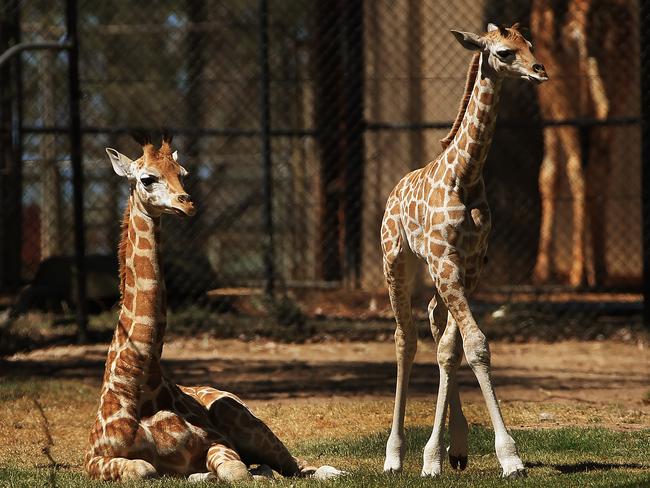
When it opened, there were 35 animals from six countries. Now, the iconic zoo is home to 64 different species and more than 750 animals.
Not only is it renowned for its animals exhibits but in 2021 its education, research and wildlife conservation arms are recognised around the world.
The zoo injects about $300 million into the Dubbo region’s visitor economy but all of its success is due to more than 250 passionate staff.
Today, the Dubbo region is in Covid lockdown after a number of people tested positive for the virus, but dedicated staff are still ensuring the animals are healthy and safe.
Meet some of the people making incredible contributions to not only Dubbo and its economy but to animal conservation.
JODIE LARDNER-SMITH
Senior veterinary nurse Jodie Lardner-Smith recently celebrated 30 years working with the Taronga Zoo family.
She began in Sydney at Taronga Zoo in Mosman and moved to Dubbo more than 26 years ago.
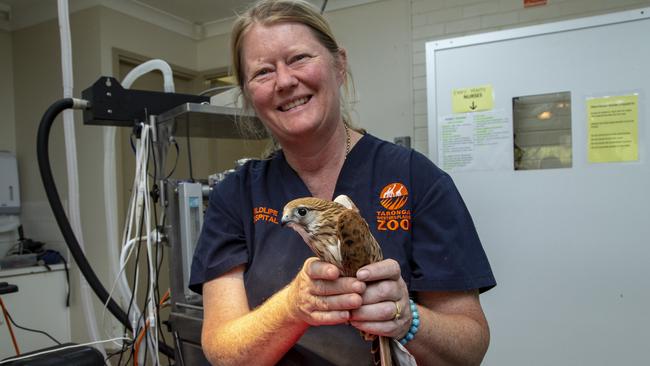
Her work ensures all animals at the zoo stay healthy and have any illnesses or injuries treated promptly.
“We also provide a service for members of the public who find injured wildlife anywhere around NSW,” Ms Lardner-Smith said.
“We do a lot of work for local wildlife groups such as WIRES. We offer a service for those people to bring their animals in that they’ve got in care.
“We have people that bring animals to us from many hours away, as well as local people or visitors who might come across an animal injured on the road or maybe something that’s come into their garden and got attacked by their dog, that sort of thing.”
Winter is often the quietest time of year for Ms Lardner-Smith and her team.
Warmer weather is a catalyst for heavier workloads.
“Usually around springtime there’s a lot of birds that have maybe fledged a little bit early and people see them and think they’re injured when they’re often just a little bit lost,” she explained.
“We have lots of reptiles hit by cars when they’re coming out of hibernation and they’re on the road getting warm. We get a lot of turtles and a lot of lizards.”

With no other dedicated veterinary wildlife service in the NSW central west, Ms Lardner-Smith said many people travel from great distances to have injured animals treated at the zoo.
“These people go to a lot of trouble to bring their animals to us. They’re very dedicated and it’s a free service we offer so we can do all the standard veterinary care. Sometimes we’ll send animals off to specialists if they need that attention.
“We’ve got carers in Gunnedah who look after koalas and because the only other option they’ve got is to drive to the Koala Hospital at Port Macquarie, they’ll tend to bring their koalas to us.
“During the drought we were seeing so many koalas that were dehydrated and verging on kidney failure. That was absolutely heartbreaking. There were some we were able to get back to the wild and that was incredibly rewarding to know that we made a difference.”
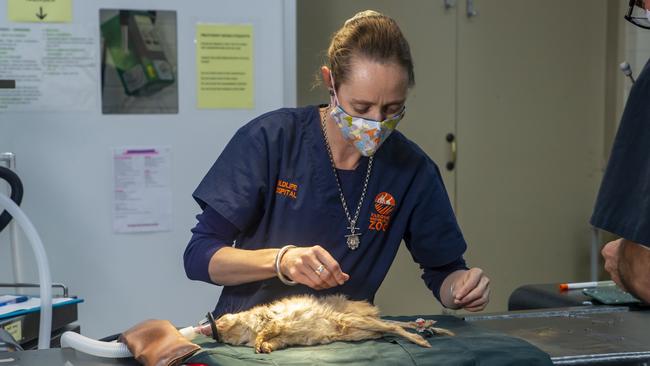
The two full-time vets who work at the zoo, along with three nurses, a fourth casual nurse and kennel hand, don’t only make a difference to the lives of injured animals, they play an important role in keeping the zoo family out of harm’s way.
“We do a lot of preventive health here, a lot of vaccinations, parasite control, managing breeding activity. We do a lot of health checks as well just to make sure our animals are in good condition, particularly when they start to get a little bit older,” Ms Lardner-Smith said.
“Sometimes some of the giraffes have had to have some foot care because their hoofs have overgrown a little bit.”
Ms Lardner-Smith and her team will soon be working from a new wildlife hospital to be built in 2023 thanks to funding from the NSW Government and private donors.
“It will give us more room and it’s a purpose-built building,” she said.
“The building we have now is very old and it’s just been added onto over the years. The new facility is going to have some really amazing hospital yards and rehab yards that we are lacking a little bit at the moment.
“That will enable us to look after animals to a higher standard. It will also be on the zoo circuit, people will be able to come and watch what we do as well.”
EMMA FAIRBANK

Tour guide Emma Fairbank has worked at the zoo for 17 years and originally started out doing an administration traineeship after she finished school.
Since 2008, Ms Fairbank has been a tour guide who shows tens of thousands of visitors around the zoo each year.
“My favourite group would have to be the retirees that are tripping around in their caravans, or have always wanted to come to the zoo but not done it before,” she said.
“We also get a lot of hardcore animal lovers who go to a zoo whenever they go on holidays.
“I often joke and say to people ‘don’t tell the zoo I’d do this for free’.”
Watching guests react when they see special sights at the zoo for the first time is one of the greatest joys Ms Fairbank gets out of her role.
“We wash our elephants every morning. It’s part of their husbandry routine to be checked over and also helps to build relationships with the keepers,” she explained.
“In part of the routine we have the elephant turn around and put its back feet up one a time on a rail so the keeper can clean them. For a lot of people they never anticipate that it’s a thing that happens with the elephants and there was one day I had about 30 people in the shed, the elephant turned around without looking and put its foot up on the rail and the group let out a big ‘wow’.
“It makes you stop and think: ‘That’s really amazing, people have never seen that before’. I love moments like that where you get those emotional reactions from people because you know that’s what they’re going to remember.”

Ms Fairbank said after doing so many tours, it was her love of animals and people that kept her passionate about her work.
“I’ve forged some really great friendships with the other staff around the zoo, every now and again you’ll be doing something and one of the keepers will say ‘hey do you want to feed this animal?’ or ‘do you want to come and see what we’re doing?’.
“As the zoo changes and the animals and exhibits change, so do the tours that we offer and that keeps it interesting as well.”
TOBY STEWART

Of all the jobs at the zoo, it’s Toby Stewart’s that often attracts the most attention.
As a zookeeper Mr Stewart is living his childhood dream and reaping the benefits of years of hard work and dedication.
“As long as I can remember, it’s always what I wanted to do. I’ve always loved animals since I was a little kid but I really wanted to play my part and have an impact in the conservation community,” he said.
“Nan and Pop used to take me, my two brothers and my cousins out to the zoo regularly. We used to love going around looking at all the animals and now I can be on the other side of the fence.”
Mr Stewart started working at the zoo as a 14-year-old in the hire centre, helping guests get access to golf carts and bikes to venture around in.
“When I finished school, I was still doing that job but I also started studying through the Taronga Training Institute which offers the basic training programs that the zoo requires you to do to become a keeper,” he said.
“I finished my Certificate III in Captive Animals at end of 2019, then got a casual keeper position.”
While many people think a keeper helps with “just feeding animals and picking up after poo”, Mr Stewart said there was a lot of extra behind the scenes work that went into understanding the animals and building trust.
“Depending on the species, there’s a lot of behaviour and conditioning training that we have to do, especially with a lot of the bigger animals we can’t get up close with,” he said.
“With a lot of our hoof stock animals, we have a facility on site that allows us to run multiple different species through a giant raceway which pretty much connects one side of the zoo to the other.
“Then we can run them through multiple crush systems and raceways where we can then give a big group of herd animals individual inspections and look over them to make sure everyone is doing okay instead of just using binoculars from a car and not getting a good look. There’s a lot of conditioning that goes into that, you can’t just run a skittish species up there first off, it takes a lot of time and preparation work.
“We slowly expose them to different things over time and when they become comfortable with one certain thing we’ll move onto the next step.”
LEANNE SUTCLIFFE
Through her work as the zoo’s cultural programs guest experience officer, Leanne Sutcliffe provides a vital link between local Aboriginal young people and the zoo.
“I love working with the kids from all backgrounds, especially helping to provide a community service through our vacation care program and zoo adventures in the school holidays,” she said.
“My focus is ensuring we are connecting Aboriginal youth with community and culture.”
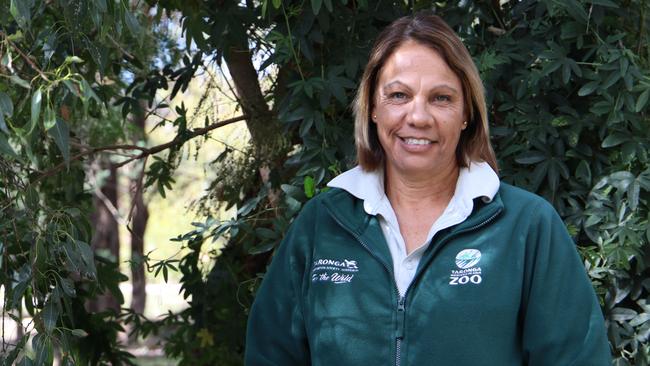
A proud local Indigenous woman, Ms Sutcliffe said she had worked at the zoo for three years and loved that her job involved developing programs for young people and partnering with other community stakeholders.
“I started out working in the health sector focusing on Aboriginal people and wellbeing,” she said.
“I have worked in the Dubbo region all my life, just like my parents did before me, especially in various roles that promote community wellbeing and working and helping Aboriginal youth.”
EMILY HARRISON

About 13 years ago, a placement at the zoo’s education centre during her final year of an education degree left a lasting impression on Emily Harrison and led her to become a volunteer at the zoo.
“I was fortunate to jump into volunteer training in early 2008 and have been doing early morning walks since,” she says.
“The volunteer group has always been supportive and the depth of knowledge is mind boggling.
“What I love is that we have this amazing resource on our doorstep. As locals, we sometimes take it for granted that we have lions and elephants right here.”
For Ms Harrison, one of the highlights of giving back is “seeing the zoo in its quiet moments”.
“The people who choose to do an early morning walk are often travellers and sharing the conservation and research that Taronga is part of is a privilege,” she said.
“A bonus is seeing people come away having learned something new and have a wonderful time together.”
PETE DRIVER
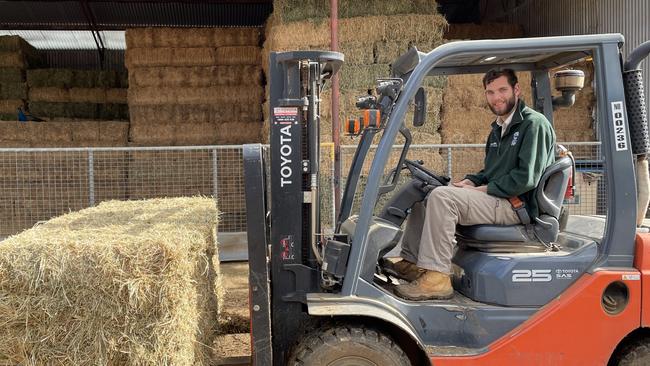
After finishing high school, zoo nutrition officer Pete Driver worked as a residential assistant at a boarding school, a swimming teacher and pizza delivery driver.
While working he also studied a Certificate II in Animal Studies and set about achieving his childhood dream of working at a zoo.
When Mr Driver completed his Certificate III the dream was realised.
“While I was completing the course, I was also fortunate enough to get a position as a tour guide in the customer service department,” he said.
“Thankfully at the end of the course I was fortunate enough to score myself a position as a trainee keeper.
“I’ve always had a love for animals, I’ve wanted to work in the industry since I was four years of age.”
For four years Mr Driver spent his time working as a casual keeper and in the zoo’s food preparation division.
“An opportunity came up to get a contract position as a nutrition officer,” he explained.
“When that contract ended I went back to being casual again and then only four months later a full-time role came up which I went for.”
In consultation with vets, keepers and a nutrition expert, Mr Driver helps ensure the health and wellbeing of the hundreds of animals that call the zoo home.
“I also manage all aspects of getting in the food produce, making sure it’s nutritionally good and effectively help, with my supervisor, to feed all the animals across the zoo,” he said.
“On a weekly basis we probably go through close to a tonne of food.
“We order in about 400kg of carrots a week, about every month we’ll get 750kg of apples in. We go through about 400kg of meat. That’s kangaroo carcass, chicken, kangaroo meat and also beef.”
That’s not all though.
“They get lettuce, sweet potato, pumpkin, bok choy, chicory, endive, they also get bananas. It’s not a myth all primates love their bananas,” Mr Driver explained.
“They get a variety of other food like sweet corn, parsnip, turnip, beetroot. Generally, you name a vegetable they probably get it.
“Besides all that, we’ve got our dry stock which we order in the tonne and we get a new batch every three months.”

Mr Driver said the elephants were the biggest eaters in the zoo.
“On a weekly basis we give them about 18 bags of carrots weighing 20kg a week, they get 15 boxes of apples, they get close to 70kg of sweet potato, 30kg of pumpkin and 100 cobs of corn and that’s just for enrichment.
“On top of that, they get their hay which they go through like it’s going out of fashion.”
Local suppliers are used as much as possible to supply food that meets the animals’ nutritional needs and helps the zoo save animals at risk of extinction, Mr Driver said.
“We’re a conservation organisation, we need to make sure the food quantity and quality isn’t only good nutritionally for the animals, but it’s also got to be good to help provide them a healthy breeding cycle.
“Every species we have here on the zoo grounds is here for a particular purpose. We’ve got a number of endangered species, we all have to do our part to primarily keep them going and high value food means more opportunity in the breeding facility.
“When we got the regent honeyeaters, our bilbies and our plains-wanderers we had to specialise and get more produce in, more crickets, worms and other types of bugs such as maggots to fulfil their daily requirements and help them participate in the breeding programs.”




